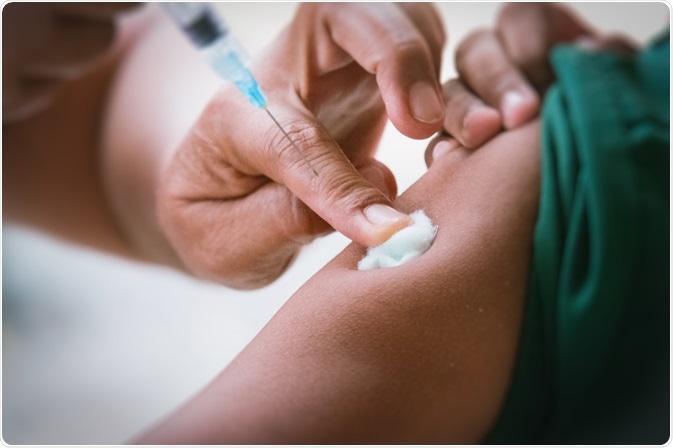
Smallpox Prevention
Smallpox is a highly contagious, serious infectious disease caused by variola virus, which belongs to orthopoxvirus family. In 1980, this devastating disease was eradicated completely through a global immunization campaign directed by the World Health Organization (WHO).

PanyaStudio | Shutterstock
How is smallpox transmitted?
Before eradication, smallpox spread from one person to another via infective droplets from infected people who coughed or sneezed. Infected people used to become contagious during the early rash stage when rashes started to appear on the tongue and in the mouth.
Another way of virus transmission is through the smallpox scabs and fluid accumulated in sores. The fluids contained viruses that contaminated household and public surfaces.
Signs and symptoms of smallpox
Smallpox infection has different stages, each with specific signs and symptoms. The duration between virus exposure and appearance of first symptom is called incubation period, which generally lasts for 7-19 days. This stage is asymptomatic, and infected people are not contagious. The initial symptoms of smallpox include high fever, vomiting, and severe head and body aches.
During the early rash stage that lasts for about 4 days, rashes start appearing on the tongue and in the mouth as small red spots. These spots gradually turn into sores, which eventually get ruptured and spread viruses into the mouth and throat.
At this point, rashes spread across the body and the fever tends to subside. Sores become pustules and gradually begin to form crusts and scabs. After few days, these scabs start falling from the skin, and within 3 weeks, most of the scabs falloff.
Preventing smallpox
There are no established treatments for smallpox so vaccination is considered to be the primary way of disease prevention. The smallpox vaccine was introduced in 1796 by Edward Jenner and was used by the WHO to successfully eradicate smallpox globally.
Vaccines used during eradication programs are called 1st generation vaccines. These vaccines were generated from the lymph or skin of the inoculated animals. Vaccines developed at the end or after the eradication programs are called 2nd and 3rd generation vaccines. These were produced using modern cell culture procedures.
Vaccines as a primary source of smallpox prevention
Vaccine as a primary preventive measure can be given to a person in different stages. People who are directly exposed or most likely to be exposed to smallpox viruses should be vaccinated, as vaccination significantly reduces the chance of getting the disease or, at least, reduces the disease intensity.
If a person gets vaccine before any viral exposure, he/she is most likely to be protected from getting smallpox. Vaccination within 3-7 days of viral exposure may also protect a person from smallpox; people who get the disease even after vaccination suffer much less as compared to unvaccinated people. However, once rashes start to appear, vaccination cannot provide any protection.
Smallpox vaccine side-effects
Usually, people vaccinated with smallpox vaccine get mild side-effects, including fever and/or body ache. Conditions that make a person vulnerable to serious side-effects include:
- A history or current incidence of chronic skin diseases such as eczema or atopic dermatitis
- Presence of active skin breaks, such as acne, at the time of vaccination
- Immunosuppression due to HIV infection, cancer, or medication, for example.
1 in 3 people typically experience mild side-effects from the vaccine, and 1 in 1000 experience serious complications.
How is the smallpox vaccine administered?
The smallpox vaccination procedure is different from other common vaccination procedures, such as shot. The procedure starts by dipping a bifurcated needle into the vaccine solution and then pricking the upper arm skin several times in a few seconds by that needle. Although pricking is superficial, it may develop sores on the skin.
After successful vaccination, a red and itchy blister develops at the vaccination site within 3 to 4 days, which eventually turns into a large blister filled with pus. During 2nd week of vaccination, the blister begins to dry, forming a scab, which falls off in the 3rd week.
How to prevent serious side effects after vaccination
Since the virus used for vaccination is live, it can be spread by touching the vaccination site or by touching virus-infected objects. Measures that can be taken to prevent such transmission include:
- Cover the vaccination site loosely by a bandage
- Wear clothes that cover the bandage area
- Keep the vaccination site dry
- Change the bandage every 2-3 days
- Properly dispose of the used bandage
- Try not to touch the vaccination site; if touched, wash the hands thoroughly with soap and water.
Sources
Further Reading
Last Updated: Nov 15, 2018





















.jpg)










No hay comentarios:
Publicar un comentario